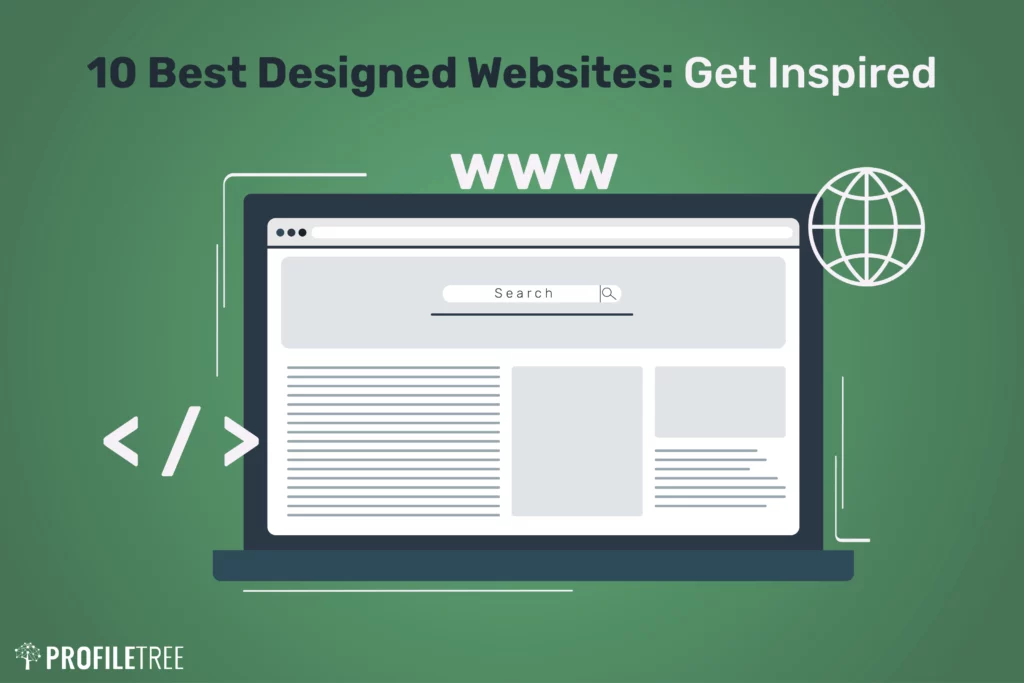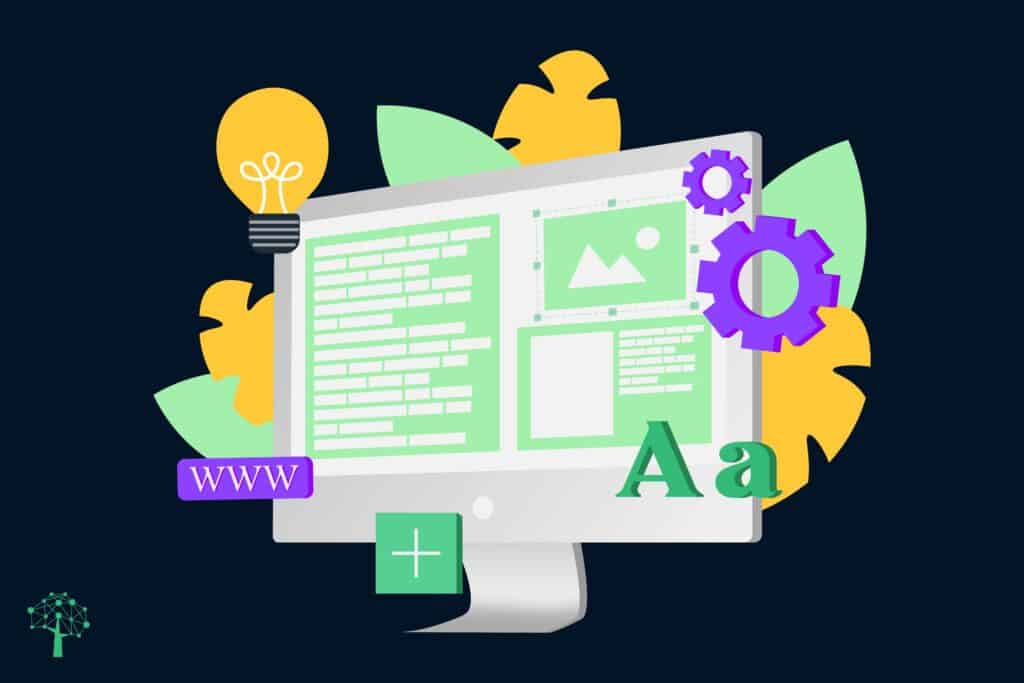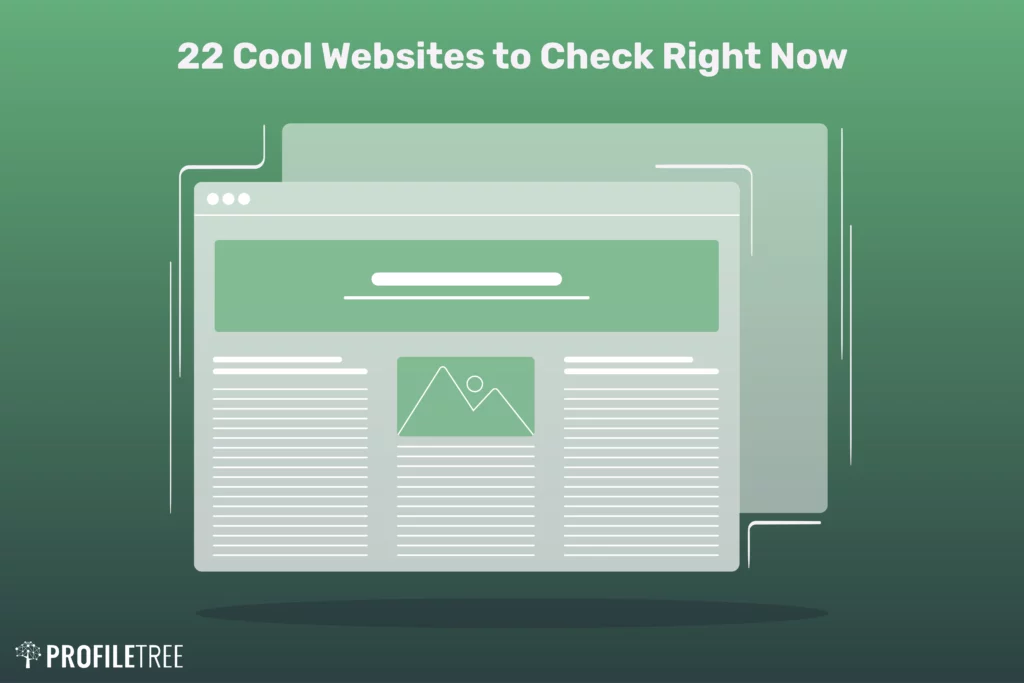In our digital age, accessibility is not a luxury but a fundamental aspect of any web service. Accessibility testing tools ensure that web applications are usable by people of different abilities and disabilities, which is not only beneficial for inclusivity but also a legal necessity in many regions. Manual techniques such as reviewing keyboard navigation and screen reader compatibility work alongside automated tools that can quickly scan for compliance with standards such as the Web Content Accessibility Guidelines (WCAG).

At ProfileTree, we understand that developing an accessibility testing strategy is crucial for delivering accessible content to the widest possible audience. Remediation of identified accessibility issues is as important as the initial testing itself, ensuring that any barriers to access are corrected. Accessibility testing isn’t confined to desktop environments either; it equally applies to mobile platforms where screen readers and voice control play a significant role for users.
Understanding Accessibility
In the realm of digital content, accessibility ensures that websites, tools, and technologies are designed and developed so people with disabilities can use them. We shall explore the core principles that guide accessible web design and the legal frameworks that mandate its implementation.
Core Principles of Web Accessibility
To grasp the essence of web accessibility, it’s essential to understand the four guiding principles of the Web Content Accessibility Guidelines (WCAG): Perceivable, Operable, Understandable, and Robust (POUR). Essentially, these principles assure that content is perceivable through various senses, operable with different devices or inputs, understandable in clear and predictable ways, and robust enough to work with current and future technologies. Each principle is targeted to accommodate different disabilities, including visual, auditory, motor, and cognitive impairments.

- Perceivable: Information and user interface components must be presentable in ways that users can discern, regardless of their sensory abilities.
- Operable: User interface components and navigation must function via various means – not solely reliant on a mouse or traditional touch controls.
- Understandable: Information and the operation of the user interface must be comprehensible, meaning content should be clear and the interface predictable.
- Robust: Content must be able to be interpreted reliably by a wide range of user agents, including assistive technologies.
Legal Frameworks and Standards
Web accessibility is not only a matter of good practice but also a legal requirement in many contexts. Firstly, the Americans with Disabilities Act (ADA) mandates that all electronic and information technology must be accessible to people with disabilities. Another significant regulation, Section 508, requires federal agencies to make their electronic and information technology accessible to people with disabilities.
In the UK and the European Union, similar legal obligations are set forth by the Equality Act 2010 and the European Accessibility Act, respectively. Notably, the Web Content Accessibility Guidelines (WCAG), developed by the World Wide Web Consortium (W3C), serve as the foundation for most of these legal requirements. The guidelines consist of three levels of accessibility standards:
- Level A: Minimum level of web accessibility.
- Level AA: Targets a wider range of issues and is the benchmark for legal compliance.
- Level AAA: The highest and most comprehensive level of web accessibility.
Meeting just the minimum standards is often insufficient for full accessibility or legal compliance; hence, Level AA is typically the recommended target. Businesses and developers must familiarise themselves with the specifics of WCAG to ensure their websites and digital content align with both legal requirements and accessibility best practices.
Utilising our expertise in web design and SEO strategies, we at ProfileTree recognise the immense value that accessibility adds, both in aligning with legal standards and in providing an inclusive user experience. “Optimised websites must advance beyond mere functionality; they should be welcoming to all users,” states Ciaran Connolly, ProfileTree Founder. “An accessible website reflects a company’s commitment to inclusivity and equal access, further enhancing its brand in the digital marketplace.”
The Importance of Accessibility Testing Tools
Testing for accessibility is a critical aspect of web development that ensures all users, regardless of their abilities, have equal access to information and functionalities on the web. Accessibility testing is the process of designing websites and applications to be usable by people with various disabilities, including those affecting vision, cognition, hearing, and mobility.
Compliance: Adhering to established guidelines like the Web Content Accessibility Guidelines (WCAG) is not just about avoiding legal pitfalls; it’s a commitment to equality.
Inclusivity: By considering users with disabilities in our design, we not only enhance digital accessibility but also promote inclusivity and respect for diversity.
Broader Reach: A website that’s accessible to all, including those with colour blindness, low vision, or cognitive impairments, reaches a wider audience and can lead to a larger customer base.
- Improved User Experience: Elements like screen reader compatibility and keyboard navigation aid not just those with disabilities but also those in temporary circumstances like bright sunlight or a broken arm.
Here is an insight from our specialists
- Evaluate website accessibility to ensure that text is legible, and that navigation is intuitive.
- Utilise automated tools to flag potential issues, then conduct manual testing to address nuances that require human judgment.
- Adopt design practices that cater to a wide array of sensory preferences, considering factors like contrast ratios for users with low vision.
- Simulate the experience of those with disabilities to gain a firsthand understanding of the obstacles encountered, thereby creating more empathetic design solutions.
We are dedicated to fostering an online environment where inclusivity is the norm and where every user, regardless of their situation, has the tools needed to interact with digital content effectively. By carrying out thorough accessibility testing, we ensure that we are delivering on the promise of a web that is open and accessible to all.
Manual Accessibility Testing Techniques
In our approach, manual accessibility testing is an indispensable component of creating inclusive web experiences. It involves meticulous evaluation by testers who use specific tools and techniques to emulate the experiences of various user groups, particularly individuals with disabilities.
Human Evaluation Processes
When we conduct manual tests, we focus on human evaluation processes that closely mimic real-world scenarios. This might involve keyboard testing to ensure that all functionalities are operable via a keyboard, catering for users with motor impairments. Furthermore, we develop an accessibility checklist which serves as a comprehensive guide for our testers, detailing critical elements such as colour contrast, font sizes, and interactive components that are vital for users with visual or cognitive disabilities.
Assistive Technology Simulation
In manual testing, it’s crucial to simulate the usage of assistive technologies (AT). We use tools that mimic the functionality of screen readers and other assistive devices to assess the usability of digital content for audiences with visual, hearing, or cognitive impairments. For mobile testing, this extends to ensuring compatibility with the assistive tools unique to smartphones and tablets.
User Experience Heuristics
Lastly, we apply user experience heuristics tailored to accessibility. This involves empirical methods, such as heuristic evaluations and cognitive walkthroughs, to gauge the usability and user experience for individuals with disabilities. By recommending best practices and adaptations, we ensure both compliance and a positive experience for all users.
In line with our objectives at ProfileTree, we seek not just to inform but to empower. Our methods are designed to bring clarity and confidence to the complex process of manual accessibility testing.
Automated Accessibility Testing Tools
When striving to ensure that a website is accessible to all users, including those with disabilities, automated accessibility testing tools play a pivotal role. These tools can rapidly identify issues that may hinder accessibility, streamlining the process for developers and site owners.
Browser Extensions and APIs
Browser extensions such as Axe DevTools and Wave are instrumental for integrating accessibility testing directly into the web development workflow. By providing instant feedback on the accessibility of a site within the browser, these tools help identify and rectify issues with ease and efficiency.
APIs, on the other hand, allow for more customised and automated testing processes. Tools like Axe offer APIs that can be incorporated into automated testing pipelines, enabling continuous accessibility checks throughout the development lifecycle.
Stand-alone Software Suites
Software suites such as SortSite and Tenon offer comprehensive solutions for automated accessibility testing. Such suites conduct extensive site-wide analysis and generate detailed reports, which are crucial for an in-depth understanding of accessibility barriers present in a site’s design.
Online Scanning Services
For those seeking a quick and straightforward method to assess a site’s accessibility, online scanning services offer a viable alternative. Services like Lighthouse provide a cloud-based approach, delivering thorough insights following the Web Content Accessibility Guidelines (WCAG).
By leveraging these automated tools, developers can ensure that their websites are not only compliant with legal requirements but also offer a more inclusive user experience. Our role is to keep abreast of such technological advancements, guiding our clients towards the tools best suited for their unique needs.
Accessibility Testing for Content
When ensuring digital content is accessible, we must consider the diverse needs of users with disabilities. Our efforts focus on providing equal access and a seamless user experience.
Textual Content Considerations
When reviewing textual content for accessibility, we prioritise the clarity of the language, the structure of the HTML, and visual aspects like colour contrast. Key HTML elements must be used correctly to support screen readers; for instance, headings (<h1> to <h6>) should reflect the accurate reading order. Moreover, we must ensure colour contrast meets or exceeds WCAG requirements, making text readable for visually impaired users.
Bullet points to consider for textual content accessibility
- Is the reading order logical and programmatically determined by HTML?
- Do text colours provide sufficient contrast against the background?
- Are font sizes adjustable without loss of content or functionality?
Multimedia Content Accessibility
Multimedia content must be made accessible by including features like closed captioning for videos and providing transcripts for audio. These elements are essential for users who are deaf or hard of hearing. We utilise JavaScript to control multimedia elements effectively without compromising accessibility. Our guidance adheres to WCAG standards, ensuring that multimedia is accessible without reliance on a mouse and available to keyboard-only users.
Accessible multimedia content includes
- Closed captioning for videos, capturing all spoken dialogue and significant sounds.
- Transcripts for audio content, ensuring that information is conveyed textually.
By incorporating these practices, we assist all users in accessing content regardless of their physical abilities. Our commitment to accessibility ensures that no user is left behind.
Developing an Accessibility Testing Strategy
To navigate the complexities of accessibility, we must develop a robust accessibility testing strategy. This strategy should encompass a variety of techniques and ensure that the work developers contribute adheres to best practices established by the Web Accessibility Initiative (WAI).
The first step is to establish a template or framework for testing processes, along with comprehensive guidance for every team member to follow. Here’s how you could design an effective strategy:
Create a Dashboard: Implementing a dashboard for monitoring progress and identifying issues can keep us on track.
List out Techniques: Identifying the various techniques, such as screen reader testing, keyboard navigation checks, and colour contrast analysis, is vital to cover different disability scenarios.
Integrate Accessibility into Usability Testing: It’s essential to understand that accessibility and usability testing are intertwined. Our strategy should reflect this by including users with disabilities in our testing processes.
Educational Component: Provide training for developers and testers on accessibility standards and testing procedures.
Tool Selection: Choose appropriate automated tools to complement manual testing efforts, allowing for broader coverage and efficient detection of common issues.
Example Test Strategy Checklist
- Understand Legal Compliance: Familiarise ourselves with standards such as WCAG 2.1, ADA, and Section 508.
- Set Accessibility Goals: Define clear, measurable objectives for accessibility.
- Manual and Automated Testing: Blend both testing methods for comprehensive coverage.
- User Involvement: Involve real users with disabilities in the testing phase.
- Continuous Learning: Keep our testing team updated with the latest accessibility guidelines and techniques.
- Feedback Loop: Ensure there is a clear process for feedback from accessibility tests to be incorporated into the development lifecycle.
Our goal is to provide a systematic approach that integrates seamlessly with existing development practices. It’s not just about ticking boxes; it’s about genuinely enhancing the user experience for everyone. By adopting these strategies, we can create products that are not only compliant but are truly accessible to all users.
Remediating Accessibility Issues

When carrying out accessibility audits, it’s crucial not only to identify accessibility issues but also to understand the strategies to remediate these problems effectively. A remediation plan champions inclusive design, ensuring digital content is accessible to all users, including those with disabilities.
Steps for Remediation
Prioritise Issues: Begin by categorising issues based on their impact. High-priority issues should be addressed first to ensure they don’t impede the accessibility of your website.
Employ the Right Tools: Use validated accessibility testing tools to identify issues. These tools often provide recommendations for fixes that comply with the Web Content Accessibility Guidelines (WCAG).
Manual Testing: Tools can sometimes generate false positives; hence, manual testing is important for thorough validation.
Developing Solutions: Embrace best practices in coding and design to remediate identified issues and ensure all users have equal access to information and functionality.
Training and Awareness: Educating your team on accessibility standards is key to maintaining an accessible digital presence.
Review and Iterate: After implementing changes, re-evaluate your website to ensure all remediations have been successful.
By following these steps, we ensure an inclusive digital space where everyone is catered for, significantly improving user experience.
“We’ve found that small, consistent steps towards compliance can have a huge impact on user engagement and satisfaction,” notes ProfileTree’s Digital Strategist – Stephen McClelland. Remember, remediation is an ongoing process, and maintaining accessible web design is key to accommodating all users.
Tools and Resources for Developers
In our quest to make the web accessible for everyone, we understand the importance of having the right tools at our disposal. Web accessibility testing tools are essential for developers to ensure that applications are usable by all, regardless of disability. Here’s a concise guide to some of the key resources available:
- QualityLogic delivers a range of testing tools to validate the accessibility of web content and applications against WCAG guidelines.
- Developers often use Siteimprove to monitor WCAG compliance by automatically checking web pages against accessibility standards.
- With ARIA (Accessible Rich Internet Applications), we can enhance web content for users with disabilities, especially in dynamic content and advanced user interface controls developed with Ajax, HTML, JavaScript, and related technologies.
- Salesforce offers comprehensive tools that integrate accessibility checks directly into the development process, which is instrumental in creating accessible applications from the ground up.
- Accessible provides an AI-driven approach for a more plug-and-play solution, automating many aspects of web accessibility compliance.
- It is also crucial to engage services like QASource, which offers specialised accessibility testing to cater to a diverse user base, to ensure thorough testing.
| Resource | Description |
|---|---|
| ARIA | Enhances web applications for assistive technologies |
| Salesforce | Integrates accessibility into development workflows |
| Siteimprove | Monitors and reports on WCAG compliance |
| Accessible | Automates web accessibility with AI technology |
| Accuracy testing | Verifies and validates accessibility |
Our collective mission is to create inclusive digital environments. To make this easier, here’s a tip: balance automated testing with manual expertise. No tool on its own will catch all accessibility barriers, so it is indispensable to also conduct manual testing and user testing with individuals who have disabilities.
Accessibility testing tools and resources like these not only align with our values but empower us to achieve compliance and inclusion. By leveraging these tools, we bridge the gap between diverse user needs and the digital world. Remember, it’s about making a web that’s truly world-wide, and it starts with us.
Accessibility in Mobile Environments
Mobile environments present their own set of accessibility challenges and require specific tools and techniques to ensure inclusivity. In the sections below, we explore these elements and offer insights into the effective application of mobile testing.
Unique Challenges of Mobile Accessibility
The unique nature of mobile devices means they bring a distinct set of challenges to the accessibility landscape. Unlike traditional desktop environments, mobile devices are used on the go, requiring accessible design to accommodate touch interfaces, smaller screen sizes, and varying environmental conditions. Mobile accessibility must not only comply with the Web Accessibility Initiative (WAI) guidelines but also consider factors such as device-specific gestures, screen reader compatibility, and the practicality of voice commands for users with disabilities. Fundamental elements such as text enlargement and colour contrast must be meticulously applied to ensure usability for all, including those utilising assistive technologies like TalkBack for Android and VoiceOver for iOS.
Mobile Testing Tools and Techniques
For the successful integration of accessibility within mobile applications, various tools and techniques are essential. We recommend combining both automated and manual testing methods to cover the spectrum of potential barriers encountered by users with disabilities.
- Automated Testing Tools: Automated tools can quickly identify accessibility flaws, which is critical in the fast-paced mobile environment. Accessibility Insights provides a free solution for automated testing on iOS and Android, whereas tools like AccVerify bring a paid solution with a more detailed approach, including manual testing options.
Manual Testing Techniques: Manual testing encompasses a critical review of mobile applications to ensure they are intuitively usable. It requires testing for text enlargement and magnification within built-in accessibility settings as a fundamental step, which is vital for detecting interface issues like cut-off text or improperly magnified focus elements.
Table of Mobile Testing Techniques
| Technique | Description | Usage Example |
|---|---|---|
| Automated Testing | Uses software tools to find accessibility issues. | Accessibility Insights, AccVerify |
| Manual Testing | Involves human testers to assess usability and compliance. | Testing with actual assistive technology such as screen readers. |
| Assistive Technology Simulation | Simulating screen reader and other technology behaviour. | VoiceOver on iOS, TalkBack on Android |
| User Testing | Involves real users with disabilities to validate accessibility. | Conducting user focus groups and individual testing sessions. |
By combining these tools and techniques, we can create mobile applications that are truly accessible to all users. It is our job to adapt and tailor our mobile content to meet the diverse needs of individuals with differing abilities. Through thorough testing and a dedication to inclusive design, we ensure that our digital landscape remains open and usable for everyone.
Advanced Topics in Accessibility
Exploring advanced topics in accessibility unlocks greater inclusivity and improved user experiences. These are critical for websites and applications to be perceivable, operable, understandable, and robust, as outlined by the World Wide Web Consortium (W3C).
Accessible Rich Internet Applications (ARIA)
ARIA is a suite of attributes that make web content more accessible. We use ARIA to describe elements’ roles, states, and properties that are not natively determined by HTML. For instance, ARIA landmarks help users navigate, identify, and interact with web content using assistive technologies. We ensure that using ARIA complements semantic HTML rather than replacing it. The W3C has provided detailed guidelines, which we adhere to, enhancing accessibility without introducing additional complexity for screen reader users.
Internationalisation and Localisation in Accessibility
Internationalisation and localisation are processes by which we make web content not only accessible but also usable across different languages and cultures. This goes beyond mere translation, addressing issues such as text direction for languages like Arabic or Hebrew and ensuring date, time, and number formats are correct. We ensure that English, French, Ido, or Latin users, among others, find the content logically structured and semantically meaningful. By focusing on local conventions, we make sure our design remains operable and understandable for diverse audiences, thus truly globalising the digital experience.
By adopting ARIA and adhering to localisation best practices, we move towards realising the W3C’s vision for a fully accessible internet. Our efforts to ensure that content is adaptable and contextually relevant to various languages and cultures exemplify our dedication to these advanced accessibility topics.
Maintaining Compliance and Monitoring
In our digital landscape, ensuring that your digital content is accessible to all users is not just ethical; it also complies with legal standards. Implementing continuous monitoring and effectively managing feedback is critical in maintaining accessibility compliance.
Continuous Monitoring Practices
We advocate for real-time, continuous monitoring of digital properties to ensure ongoing compliance with accessibility standards such as the Web Content Accessibility Guidelines (WCAG). This can be achieved through automated tools that regularly scan for issues and provide actionable insights. For a more comprehensive monitoring strategy, we also utilise dashboards that offer at-a-glance views of a website’s accessibility health, enabling us to make swift decisions and updates where necessary.
- Implement automated monitoring tools to audit for accessibility issues regularly.
- Utilise dashboards for an overview of web accessibility status, ensuring a proactive approach to compliance.
Reporting and Managing Feedback
When it comes to managing an accessibility initiative, it’s vital to establish a clear process for both internal reporting and external feedback. This includes providing transparent communication channels for users to report accessibility concerns. Internally, setting up a responsive feedback management system ensures that user insights lead to actionable usability improvements. Such a system not only demonstrates compliance but also reinforces the ongoing commitment to an inclusive digital experience.
- Create clear feedback channels for users to report accessibility issues.
- Ensure a responsive internal system is in place for managing and acting on feedback to enhance usability.
Through these subsections, we aim to provide a structured approach to maintaining compliance and monitoring in the realm of web accessibility. Let us remember that accessibility is an ongoing journey—a commitment to continuous improvement that serves the diverse needs of our entire user base.
Frequently Asked Questions

As specialists in the field, we are often asked about how to test and ensure accessibility on the web effectively. This section aims to address those common inquiries with precise information and practical guidance.
What are some freely available tools for testing accessibility on the web?
Freely available tools such as WAVE, AXE, and Google Lighthouse allow us to test web accessibility. These tools help identify areas where a website may not meet accessibility standards and require improvement.
How does one conduct thorough accessibility tests on websites?
To conduct thorough accessibility tests, we combine automated tools with manual testing. We assess a website against the WCAG criteria, checking for visual, auditory, and interactive elements that must be accessible to all users, including those with disabilities.
Could you list three automated tools commonly used for accessibility validation?
Three widely used automated tools for accessibility validation are JAWS (Job Access With Speech), NVDA (NonVisual Desktop Access), and VoiceOver. These tools simulate the user experience of individuals with visual impairments.
Which tool is highly recommended for checking accessibility compliance?
The tool highly recommended for checking accessibility compliance is AXE. It integrates into browsers and development tools, making it easy to use for both developers and testers to check compliance with accessibility standards.
What techniques are effective for developers to ensure web accessibility?
Developers can ensure web accessibility by using semantic HTML and ARIA (Accessible Rich Internet Applications) roles when necessary. They can also ensure that all interactive elements are keyboard-navigable. To improve readability, it’s also important to consider the correct use of colour and font sizes.
What are the considerations when using Chrome extensions for accessibility testing?
When using Chrome extensions for accessibility testing, we consider reliability, ease of use, and the ability to test a wide range of accessibility issues. It’s essential to use extensions that are updated regularly to conform to the latest accessibility standards.


